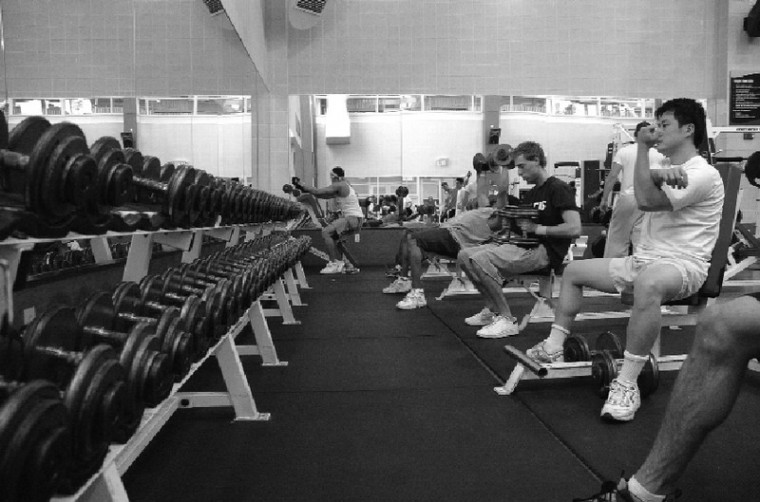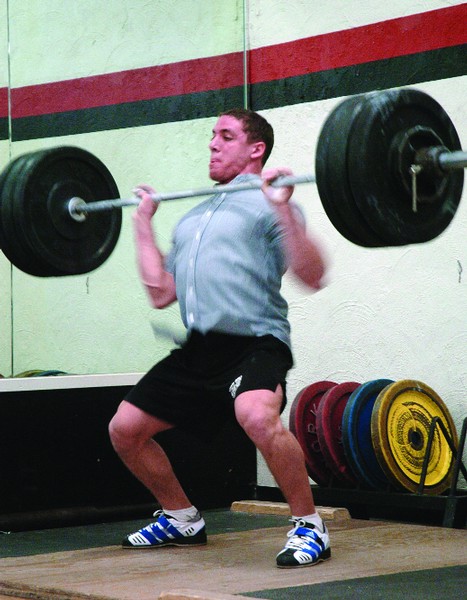As students finalize their spring break plans, the Campus Recreation Center’s weight room is packed with students doing countless sets of bicep curls and ab work to put the finishing touches on their six-packs.
But tucked away in the smaller, darker weight room in the Health and Human Performance Building, about 10 of the university’s die-hard lifters meet to work out.
Unlike the spring-break crowd that packs into the CRC daily a few weeks before leaving for the beach destinations, the weightlifting club lifts three times a week, and members claim they see better results than students who overtrain.
Allan Jaworski, the weightlifting club’s coach, said “spring breakers” spend too much time focusing on the “mirror muscles,” the biceps, abs and chest muscles that are visible from the front. He said they neglect leg and back muscles that are crucial in seeing results in a weightlifting program.
Jaworski also said spring breakers tend to overtrain. They go from zero workouts to lifting six times a week, and they focus on the wrong muscle groups.
“Seventy percent of the muscles in the body are in the thighs, butt and back,” Jaworski said. “The spring breakers spend about 90 percent of their time working their biceps, triceps and abs.”
This imbalance in program design leads to an imbalance in the muscles in the body which results in people looking disproportionate, he said.
“It will look like guys have really big, strong chests,” Jaworski said. “But their chests only look so big because they are disproportionate to their chicken legs, which they never work out.”
Not all who rush to build muscles make this mistake, though. Michael Davis, a freshman computer engineering major who recently began going to the weight room every day, said he focuses on all the major muscles groups, doing upper body one day and lower body a different day.
Senior computer science major Garrett Longmire said he works out in a similar fashion. He lifts three to four times a week and does different muscle groups on different days.
Brianne Meyers, the coordinator of fitness programs at the university and a certified personal trainer, said weight training is an important part of any fitness program. Benefits of weight training include increased muscular tone and can help prevent injury, as well as making daily tasks easier to accomplish, she said.
But she stressed that overtraining and poor form can lead to injury. For people serious about lifting weights the proper way, she recommends setting small but realistic goals and making the changes over a period of time.
Veronica Aguila, a 2003 graduate and member of the weightlifting club, said rest is the key to preventing injury and giving muscles the time to rebuild.
“People tend to underestimate rest,” she said.
Meyers added that spot reduction, the ability to lose fat from an isolated area of the body, is one of the biggest myths in the exercise world.
“It’s just not possible to reduce certain spots,” she said.
Jaworski said the best way to put together an effective weightlifting program is to train like athletes train and not the way magazines recommend people train. “If you look at an athlete, their muscles are even,” he said. “They don’t have any freaky muscles sticking out.”
This is because athletes work their full bodies, not just the muscles that can be seen in the mirror, Jaworski said.
“The body is not a connection of parts,” he said. “You are not Frankenstein. You are a system that’s supposed to work together.”
University Students trying to bulk up before spring break have flooded campus weight rooms in recent days.
Junior neurobiology major Jeff Steinberg is treasurer of the university weightlifting club.





